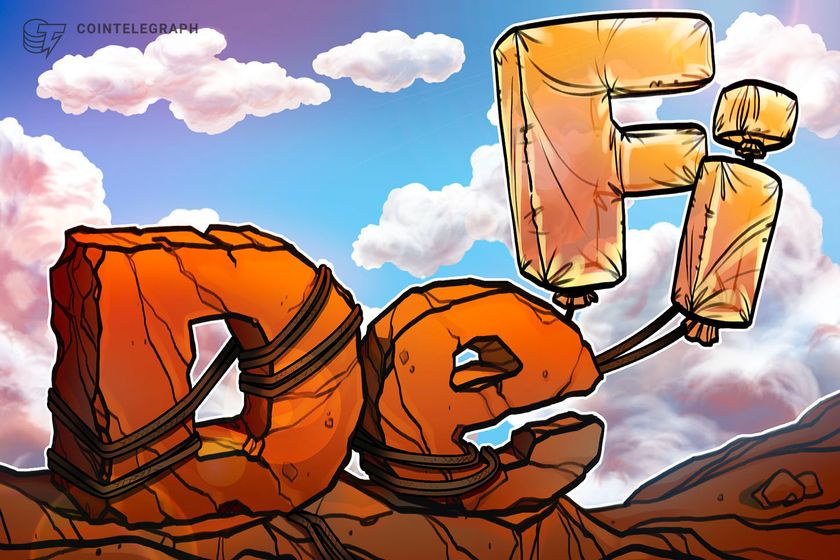
Polygon Labs CEO Marc Boiron known as for a elementary shift in how decentralized finance (DeFi) protocols handle liquidity, labeling the sector’s ongoing liquidity disaster as “self-inflicted.”
In an unique interview, Boiron outlined Polygon’s imaginative and prescient for sustainable DeFi, emphasizing chain-owned liquidity and clear financial fashions as the trail ahead.
Boiron criticized DeFi protocols for fueling a cycle of “mercenary capital” by offering sky-high annual percentage yields (APYs) via token emissions. “It’s simply renting liquidity; it’s not actual loyalty,” he instructed Cointelegraph, noting that such methods result in fleeting liquidity that vanishes when yields drop or token costs falter. This reliance on short-term hype, he argued, undermines the sector’s stability and deters institutional adoption.
Chasing DeFi stability over hype
To interrupt that cycle, Boiron urged protocols to prioritize fundamentals over flashy returns. “Sustainable DeFi wants fashions the place liquidity sticks round for the appropriate causes,” he mentioned, pointing to Polygon’s POL token as a blueprint for attaining this.
“Protocols can put their treasury to work, incomes yield as a substitute of diluting token worth. Over time, this strengthens the treasury moderately than simply paying off non permanent liquidity suppliers.”
Polygon’s method facilities on chain-owned liquidity, the place protocols construct treasuries to straight personal liquidity positions moderately than counting on exterior suppliers. Not like token emissions, which Boiron mentioned entice liquidity shortly however dilute token worth, owned liquidity gives long-term stability and capital effectivity.
The one trade-off within the plan, in line with Boiron, is time. He defined that constructing a treasury via captured charges, bond mechanisms or restricted emissions requires endurance and disciplined administration.
Polygon prepares to onboard conventional finance in crypto
For conventional finance (TradFi), liquidity stability and predictability are conditions for full DeFi adoption:
“Conventional finance runs on fashions that want steady, dependable market entry. If a DeFi protocol all of the sudden loses liquidity or slippage spikes, it creates a stage of danger most establishments simply gained’t take.”
Nonetheless, Boiron mentioned that Polygon’s options — sustainable treasury administration, owned liquidity and clear fashions — are usually not only for establishments. “These are good monetary fundamentals that work for any protocol,” he mentioned, dismissing solutions that Polygon’s technique is simply too slim to deal with DeFi’s broader points.
Associated: Yemenis are turning to DeFi as US sanctions target Houthi group
Constructing a scalable blueprint for chain-owned liquidity
As Polygon pushes for a DeFi reset, Boiron stays optimistic about getting help from frameworks like Europe’s Markets in Crypto-Property Regulation and evolving US steerage. “We’re 12–18 months away from seeing much more institutional involvement,” he predicted.
Trying to 2026, Boiron envisions a extra steady DeFi ecosystem with much less volatility, stronger group governance and complicated monetary merchandise bridging TradFi and real-world property. He mentioned Polygon (POL) might scale back reliance on mercenary capital, fostering true decentralization.
He added that POL is the inspiration for long-term development, because it helps protocols deal with constructing higher merchandise and conserving customers engaged, as a substitute of plugging liquidity gaps or diluting tokens to remain afloat:
“POL doesn’t clear up all the things by itself, but it surely provides protocols the respiration room to deal with larger challenges like person retention and capital inflows the appropriate method.”
Boiron’s core message to DeFi protocols is obvious: “Sustainable economics all the time win in the long term.” Whereas market pressures make it tempting to chase excessive APYs, he famous that surviving protocols from previous cycles show the worth of sustainability. “Extra groups are beginning to get it,” he mentioned, urging the ecosystem to undertake fashions that prioritize long-term development over fleeting buzz.
Journal: Ethereum is destroying the competition in the $16.1T TradFi tokenization race












